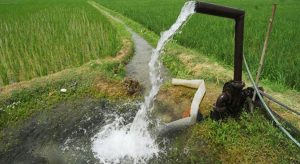Farm subsidy reform seen potentially raising agri production by 17%

REPURPOSING agricultural subsidies to infrastructure could help countries like the Philippines boost agricultural output and exports while ensuring food security, participants said at a forum organized by the Asian Development Bank (ADB).
“This repurposing benefits not just those countries, but the entire ADB region, increasing agricultural output by 17%, reducing hunger by 51 million people, or 30% in 2025,” Mark Rosegrant, research fellow emeritus at the International Food Policy Research Institute, told the ADB Food Security Forum.
Countries urged to repurpose their agricultural subsidies were the Philippines, China, India, Kazakhstan, Indonesia, Thailand, Bangladesh, and Vietnam.
“Investments in broad-based rural infrastructure cuts post-harvest losses by about 50% in the region,” Mr. Rosegrant said.
The resulting lower food prices could reduce the hungry by 16 million people in 2035, he added.
Tetsushi Sonobe, ADB Institute dean, said that agricultural subsidies should be minimized, and are better allocated to research, infrastructure and irrigation to insure long-term gains for the sector.
Mr. Rosegrant also cited the need to invest in irrigation and water use efficiency.
“When you have the same trajectory of investment in irrigation together with investment in water use efficiency, you can actually reduce water use by about 7.5% while maintaining the growth in irrigated areas,” he told the forum.
Countries should also invest in agricultural research and design as well as reducing greenhouse gas emissions, he said.
“By 2050, we would have reduced the initial emissions in Asia Pacific by a third here, and that’s because of landscape productivity growth, together with generation adoption of technologies such as conservation tillage, precision agriculture, and improved management of rice and livestock among others.”
Xianbin Yao, director general of the ADB’s Economic Research and Regional Cooperation Department, said investment in all segments of the agricultural food chain, especially for rice, is crucial.
“There is still a challenge to increase the productivity for the rice yield in countries where there is high demand… that can resist the heat the water and flood and then at the same time to manage it minimize post-harvest loss,” he said on the sidelines of the forum.
“One has to carry out a very thorough assessment to decide where to allocate the resources,” Mr. Yao said. — Beatriz Marie D. Cruz




